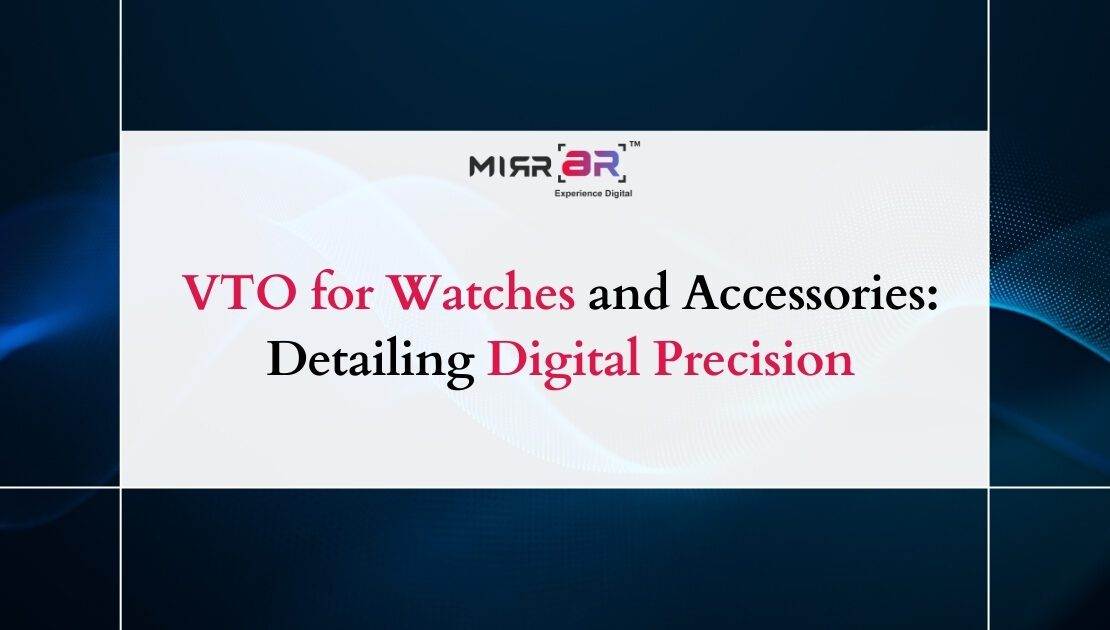
In today’s retail landscape, where personalization and convenience are no longer luxuries but expectations, Virtual Try-On (VTO) technology has emerged as a powerful bridge between the physical and digital shopping experiences. While VTO has already made strides in categories like apparel, beauty, and eyewear, its role in watches and accessories is becoming a fascinating frontier. Watches, jewelry, handbags, and other accessories are deeply personal items—defined not just by function but by style, emotional connection, and self-expression. That’s where VTO steps in, bringing digital precision and immersive experiences to help consumers make confident choices.
The Unique Challenge of Accessories
Unlike clothing, accessories are small but statement-making pieces. A watch isn’t just about telling time—it’s about elegance, status, or a bold personality. Similarly, accessories like bracelets, earrings, and handbags often carry symbolic value, cultural resonance, or even sentimental weight. This makes the buying decision highly subjective, and shoppers want to see how these items look on themselves rather than on a model.
The traditional online shopping model—static images or flat product photos—fails to deliver that personalized view. Shoppers often hesitate because they cannot imagine how a watch fits their wrist size, how a bracelet complements their skin tone, or how sunglasses suit their facial shape. This “imagination gap” often leads to cart abandonment, dissatisfaction, or costly returns. VTO solves this by eliminating guesswork and giving buyers the confidence of seeing the product virtually before committing.
Precision in Every Pixel
Watches and accessories demand exceptional detailing. A slight difference in strap width, dial size, gemstone clarity, or metallic sheen can drastically influence the buying decision. VTO technology addresses this by offering high-definition 3D renderings and AR overlays that replicate the product with remarkable accuracy.
For example, VTO for watches can show the dial’s exact size on a user’s wrist using real-time camera input. It can adjust for skin tone and wrist shape, ensuring the watch looks true-to-life. Similarly, AR trials for jewelry can capture the sparkle, the way light reflects off diamonds, or the richness of gold, making the digital experience nearly indistinguishable from trying it in-store. The result is a fusion of craftsmanship and technology that preserves the artistry of accessories while enhancing convenience.
Boosting Buyer Confidence and Reducing Returns
One of the biggest challenges in online watch and accessory sales is the high rate of returns. Buyers often complain about sizing, appearance, or mismatched expectations. By implementing VTO, brands can significantly reduce these friction points.
When customers see how a watch fits their wrist or how earrings frame their face, they feel reassured in their choices. This leads to greater confidence, higher conversion rates, and fewer returns. Moreover, accessories are often high-ticket items, and buyers want assurance before making the investment. VTO provides that assurance, turning hesitation into purchase.
Engaging the Next-Gen Shopper
Gen Z and Millennials are driving much of the accessory market today, and their shopping habits are shaped by digital-first experiences. They value interactivity, personalization, and the ability to share their shopping journey with peers. VTO aligns perfectly with this mindset by offering gamified, shareable moments.
Imagine trying on multiple watch styles virtually, comparing them side by side, or even sharing a screenshot on social media to get friends’ opinions. This doesn’t just create engagement; it transforms shopping into a fun, interactive experience. For luxury brands, this also strengthens their storytelling by allowing buyers to immerse themselves in the aura of exclusivity before they buy.
Customization at Scale
Another powerful advantage of VTO for watches and accessories is its role in personalization and customization. Many watch brands offer interchangeable straps, customizable dials, or engraving options. Accessories may allow different color tones, gemstone choices, or finishes.
VTO enables shoppers to visualize these customizations in real time. For instance, switching from a leather strap to a metal one, or toggling between rose gold and silver finishes, can be done instantly. This not only enriches the buyer experience but also encourages upselling and cross-selling as customers explore more options digitally.
Building Trust for Luxury Purchases
Luxury watches and accessories often come with a high price tag, making trust a key factor in the buying decision. Customers want to be absolutely certain that what they see is what they’ll get. VTO plays a critical role here by providing accuracy, transparency, and confidence in the buying process.
By showcasing intricate details—the engraving on a watch bezel, the craftsmanship of a clasp, or the delicate texture of leather straps—brands can replicate the in-store luxury experience online. This builds trust, making customers more comfortable purchasing expensive items digitally without needing to visit a showroom.
The Future of Digital Precision in Accessories
As technology advances, VTO for watches and accessories is moving toward even greater precision. Soon, shoppers might be able to measure wrist sizes automatically with their phone cameras, ensuring perfect strap fit. Haptic feedback or advanced AR could simulate the weight or texture of accessories, further bridging the gap between physical and digital.
With AI integrations, brands will also be able to recommend accessories based on face shape, skin tone, or even outfit choices detected through the camera—personal styling powered by technology. For retailers, this means not just more sales but also stronger brand loyalty as they meet customer expectations with cutting-edge innovation.
Conclusion
The world of watches and accessories thrives on detail, craftsmanship, and emotional value. Virtual Try-On technology enhances all three by delivering digital precision and immersive personalization. It gives shoppers the ability to make confident choices, reduces returns, and creates memorable experiences that resonate with next-gen buyers.
For brands, embracing VTO isn’t just about keeping up with technology—it’s about redefining how timeless pieces meet modern convenience. In the evolving retail landscape, VTO ensures that watches and accessories remain not only symbols of style but also of innovation.
